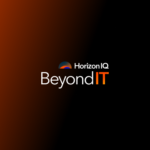Month: March 2014

Internap was back at GDC last week, and this time we had both a session (with our own Adam Weissmuller and Todd Harris from Hi-Rez Studios) and a booth at the show floor. It was very exciting to interact and learn from the gaming community and listen to their needs and wants, so we can make it easier for their games to launch and flourish. It was also a great opportunity to try out the latest tech, like the VR Headsets from PS4 and Oculus Rift, recently purchased by Facebook.
Here are some of the highlights from our GDC experience:
The morality of F2P
Free-to-play games continue to grow in number, and the way players are monetized has come under scrutiny due to what many players feel are unfair practices. During the conference, much of the F2P talk was focused on shifting people’s perception of the model by assessing whether it hinders gameplay, and the idea of using positive rewards (a.k.a. purchases as a reward) rather than negative ones, where players have to pay when they fail or to try again. But how much is too much? And how can developers still benefit from a F2P system while still keeping their players happy and engaged? The answer seems to lie in creating games that allow players to spend more time in the game without highlighting the monetization aspect of it.
How Is game publishing changing?
Publishing has undergone constant change from the days of the old big publishing houses, and that continues to be true now that developers have a wider array of options that allow them to distribute their games. Some publishers have become developers and vice-versa while most small developers have turned to app stores to find the right audience. Although none of this is breaking news, what is noteworthy in the publishing scene is that regardless of popular perception, app stores remain a small yet growing publishing segment, and there is increased consolidation in the market with companies like Tencent leading the charge (they currently own Riot and Epic games among others).
Games in the cloud
Using the cloud to develop and deploy games has been an ongoing trend for several years, and as expected, VMs have continued to become faster and more efficient in order to meet increasing demands. Currently, some cloud and hosting providers are offering specialized cloud instances whose specs may cater more strongly to game developers, while other developers are turning towards bare-metal cloud to find the performance they seek. Additionally, platforms like Unity are entering the cloud space to help developers monetize and market their games while others like Microsoft, and their newly unveiled DirectX 12, are introducing APIs to improve CPU and GPU usage.
With all the developments happening in the world of gaming, GDC was a great opportunity to interact with the gaming community and keep up to date on the latest trends.
Check out our our highlights from GDC 2016, and presentation from GDC with Hi-Rez Studios, Building a Scalable Infrastructure Platform for SMITE, Global Agenda and Tribes: Ascend
Explore HorizonIQ's
Managed Private Cloud
LEARN MORE
Stay Connected

Why is the annual Game Developers Conference an incredible experience?
The annual Game Developers Conference is always an incredible experience, and 2014 is no exception. The Internap team is proud to show our support for game developers and publishers, and also to be part of the buzz around new games and the latest innovations in gaming technology.
How did Internap and Hi-Rez Studios collaborate for the SMITE launch?
As the launch of the new multiplayer online battle arena game SMITE dawns, we teamed up with Hi-Rez Studios to present a session on gaming infrastructure at the conference. Todd Harris, Co-founder & COO of Hi-Rez Studios, discussed the positive impact of bare-metal cloud on the online gaming user experience while providing the company with a more flexible and cost-effective IT infrastructure. Having a scalable platform has been instrumental for Hi-Rez Studios to support their rapidly growing user base. Internap is proud to provide the high-performance cloud solution that helps Hi-Rez Studios achieve success. Learn more about testing, developing and deploying online games.
How can you be part of the SMITE launch?
If you’re going to be in Atlanta the weekend of March 28, check out the SMITE Launch Tournament. Worldwide SMITE teams will converge at Center Stage in midtown to battle it out in true March Madness-style competition, complete with a “Release the Bracken!” bracket challenge.
Explore HorizonIQ's
Managed Private Cloud
LEARN MORE
Stay Connected

Customer spotlight: eXelate powers smarter digital marketing decisions for advertisers
What did eXelate leaders share about their partnership with Internap?
Recently Mark Zagorski, CEO, and Brent Keator, Director of Infrastructure for eXelate, discuss how Internap helps accelerate global data delivery and real-time application deployment of the eXelate platform. Their insights highlight how critical infrastructure decisions can directly impact the speed, reliability, and scalability of a data-driven business.
Who is eXelate and what do they do?
eXelate is a data technology company that strives to make digital media more relevant for consumers and more effective for advertisers. The platform enables advertisers, agencies, and publishers to access and analyze audience targeting data in real time. To do this, eXelate ingests and manages trillions of data points on consumer behavior every month — ranging from browsing history to purchase intent signals — and transforms them into actionable insights.
Why does eXelate need a strong infrastructure backbone?
Handling trillions of behavioral data points monthly requires more than standard hosting. The company’s core challenge is to maintain high performance and uptime while delivering data instantly to marketers across the globe. This means that both storage and compute infrastructure must be built for speed, consistency, and elastic scale. Without a robust backbone, eXelate would struggle to meet the low-latency demands of advertisers who rely on split-second insights to drive digital campaigns.
How does Internap support eXelate’s growth?
Internap’s top-notch technology, including bare-metal servers, provides a high-performance cloud solution that grows and scales with demand. By leveraging Internap’s infrastructure, eXelate can ensure real-time access to its data sets while also maintaining global reach. This scalability supports the company’s international expansion, allowing it to seamlessly add capacity in new markets without sacrificing performance.
What is the impact of this partnership on marketers and data providers?
As a result of Internap’s infrastructure, the eXelate platform enables marketers and data providers to make smarter digital marketing decisions. They can access real-time, reliable data at scale, optimize ad targeting with confidence, and ultimately deliver more relevant consumer experiences. This combination of speed, precision, and scalability makes eXelate a trusted partner in the data-driven marketing ecosystem.
Explore HorizonIQ's
Managed Private Cloud
LEARN MORE
Stay Connected

Customer spotlight: Vix Technology enables contactless payments for mass transit
How is Vix Technology transforming fare collection in public transit?
While many transit agencies still rely on collecting cash from riders, that model is quickly disappearing due to advancements in fare collection technology. Vix Technology, a global provider of integrated transit and mobility systems, continues to enhance the commuter experience through innovations in contactless payment technologies.
What innovations earned Vix Technology industry recognition?
Headquartered in Australia with North American offices in Seattle, Vix Technology delivers hardware and software solutions for electronic fare collection (EFC) systems. The company recently received the Transport Ticketing Technology of the Year award for its product innovation developed for Salt Lake City’s Utah Transit Authority (UTA).
This system enables riders to pay using student and employee ID cards, bank-issued credit cards, ISIS Mobile Wallet, Google Wallet, and UTA’s FAREPAY pre-paid contactless card. By supporting multiple payment formats, Vix helps transit systems stand out in an increasingly digital transportation ecosystem.
How does the UTA FAREPAY system benefit riders and agencies?
With features like mobile account management and lost card protection, the UTA FAREPAY system creates value for both riders and transit agencies. To deliver this seamless, integrated experience, Vix requires infrastructure capable of handling millions of transactions across diverse payment types. For perspective, Seattle’s ORCA system processes more than 100 million transactions per year.
Why did Vix transition from colocation to Internap’s managed hosting?
Before partnering with Internap, Vix used dedicated colocation cabinets in local data centers—purchasing and maintaining their own hardware while managing operations internally. This model was not only capital-intensive but also costly in staffing and 24/7 monitoring requirements.
Seeking a more cost-efficient, secure, and scalable alternative, Vix evaluated multiple hosting providers and ultimately selected Internap for its strong infrastructure capabilities and service quality.
How does Internap’s solution meet Vix Technology’s infrastructure needs?
Vix Technology now uses Internap’s managed hosting services in its Seattle and Santa Clara data centers. The Internap solution addresses three primary areas of importance:
Security
With strict data privacy and transaction regulations, Vix requires complete control over how passenger information is processed. Internap’s infrastructure provides a secure, compliant environment to handle financial transactions and ensure data integrity. Vix benefits from cloud-like scalability without the risks associated with shared hosting environments.
Scalability
Internap offers dedicated scalability, enabling Vix to expand seamlessly as transaction volumes and ridership grow. Its flexible architecture supports large-scale data processing while accommodating future expansion into international markets through Internap’s global data center footprint.
Support
With 24/7 support from Internap’s Network Operations Center (NOC), Vix can focus on improving its transit solutions rather than managing infrastructure. Certified engineers provide continuous monitoring and maintenance, ensuring high uptime and reliability for mission-critical transit systems.
How do analytics enhance Vix Technology’s value to transit agencies?
Beyond fare processing, Vix empowers transit agencies with data analytics that help them understand rider behavior, optimize routes, and adjust schedules. These insights are becoming essential tools for the future of mass transit planning.
How does Internap enable Vix Technology’s global transit vision?
Whether traveling by bus, train, or ferry, Vix Technology is transforming how people connect and commute. Through its partnership with Internap, Vix combines innovative payment systems with reliable, scalable infrastructure—making mass transit more convenient for riders and cost-effective for agencies worldwide.
Explore HorizonIQ's
Managed Private Cloud
LEARN MORE
Stay Connected

Despite Comcast-Netflix deal, settlement-free peering is alive and well
Over the past week or two, the Internet has been abuzz with coverage of the deal between Netflix and Comcast. The various themes and technical concepts discussed were hardly news to me; I first covered this subject a little over three years ago as a member of the founding technical team at Voxel, which was purchased by Internap in 2011.
Though the names and congestion points have changed somewhat, a lot remains the same, including the media’s inability to comprehend or explain how traffic is exchanged at scale on the global Internet: “peering,” in the vernacular. This is not to call any journalists lazy or irresponsible; rather, peering is a highly specialized pocket of network engineering knowledge, and if you’re not working in its trenches, it’s easy to fall behind. That most engineers “in the know” are bound by strict NDAs with their employers and/or connectivity partners doesn’t help the situation; fortunately, my employer is transparent enough to allow me to share a few words of wisdom.
Settlement-free peering is dead! Long live settlement-free peering!
Before continuing further, it is important to define terminology. As explained in our technical data sheet on peering:
Peering is a connectivity method where two networks establish a direct IP connection between their networks, bypassing any third-party networks or middlemen. The most popular form of peering is known as “settlement-free peering”, where two networks agree to exchange traffic with one another directly without any form of compensation. Another form is “settlement-based peering” or “paid peering”, where two networks agree to exchange traffic directly, and compensation is involved.
Many news articles and blogs incorrectly state that settlement-free interconnection has gone the way of the dinosaur, and now content providers must pay access providers to reach customers directly. Though there are certainly well-documented examples of money changing hands, it is not fair to describe any recent announcements as a change in precedent, or even the norm.
Pretty much since inception, Verizon, AT&T, Time Warner Cable and Comcast have always required money for exchanging traffic with Internet content producers and their bandwidth suppliers (there were regionalized and M&A-related exceptions: for example, SBC peering more pervasively before the M&A which made them the “new” AT&T; likewise Adelphia prior to the fall of the Rigas family empire). This trend has continued given the expanding monopoly or oligopoly positions in the access market.
At the same time, it is important to consider a tier of networks below the “big four”. Many thousands of networks, representing both big access and big content alike, agree to exchange traffic in a settlement-free manner. Peering policies exist not to restrict data flow, but to ensure that a base set of technical standards are maintained; for example, to make sure that networks maintain a professionally staffed Network Operations Center (NOC) responding to security and operational issues, or that sufficient traffic is exchanged to justify the administrative burden of configuration or scaling router ports. I submit that these exchanges comprise the norm, not the exception. They have garnered little fanfare in the media because they continue to scale in a reliable and customer-friendly manner.

While financial terms of settlement-free peering agreements are usually confidential, there are exceptions. The Netflix Open Connect Program is a settlement-free arrangement of sorts: access providers agree to house Netflix servers in their datacenters, or connect to Netflix at carrier-neutral exchange points; in turn, their customers are granted direct access to Netflix’s content library, bypassing third-party intermediary networks. Notable participants include SuddenLink, Cablevision, RCN, and Sonic.net. Why would these access providers allow Netflix, who reportedly represents over 30% of the Internet’s traffic during peak hours, to abuse their pipes for free, when others have charged tolls? It’s really quite simple: their customers benefit.
I live in a pocket of northern New Jersey where Cablevision and Verizon are options for broadband Internet. Though Verizon has the upper hand in the “speeds and feeds” arms race, their congested peering makes for a sub-par user experience: with congestion on a large portion of their peering connections with other ISPs, Netflix and YouTube are hardly usable between 6:00 PM and midnight. In contrast, though limping along with its slower DOCSIS 3.0 access technologies, Cablevision runs its edge connections free of congestion, allowing me to stream cat videos or “House of Cards” (Season 2, Episode 1? Just wow!) in beautiful 1080p. Cablevision has successfully proven the value of a more open peering policy as a competitive differentiator.
Ratios make the world go round!
All the same, telco die-hards and their sympathizers will continue to argue that settlement-free peering doesn’t add up. To them, large content producers are abusing access networks by lumping traffic on their pipes, whether or not this is the same content requested of their revenue-generating customers. Care and feeding of large-scale networks does not come cheap, and everyone needs to pay their fair share in network upgrades. It is also believed that traffic ratios should factor into economic settlement: if a network is generating traffic predominantly towards a network, rather than receiving traffic from it, then it should bear the majority of the cost burden.
Some additional food for thought:
- Counter to the above wisdom, it is believed that scaling a subscriber’s upstream bandwidth on a DOCSIS-based cable network costs approximately five times as much as scaling a user’s downstream bandwidth. Shouldn’t backup operators, and other services with “pull heavy” traffic profiles, be the ones truly viewed as abusers?
- Paid peering is said to level the playing field by allowing a content provider to offset an access provider’s costs of servicing heavy traffic flows. Do transit/peering costs at carrier-neutral datacenters, where ISPs and content providers connect, have a bearing on costs of scaling the last mile? Has there been any open disclosure of what these costs even are?
- Relating Internet traffic to conventional telecom terms (as has been common over the past week or two), why should IP traffic be viewed as “sender pays” when “Bill and Keep” is a more apt analogy?
- Customer support is a major expense for broadband ISPs, and it is said that a single truck roll (service call) can move a subscriber into the red for a full year. I don’t believe any ISPs maintain statistics on truck rolls incorrectly ordered for congested peering; if they did, they might find that their yearly OpEx in misdiagnosed support incidents dwarfs any possible revenues in paid peering.
A rose by any other name
A key tenet of the FCC’s Open Internet Order (December 2010) is “no blocking” summarized as:
ii. No blocking. Fixed broadband providers may not block lawful content, applications, services, or non-harmful devices; mobile broadband providers may not block lawful websites, or block applications that compete with their voice or video telephony services;
Leading up to last week’s announcement, Comcast and Verizon both issued public statements confirming that they did not block or rate-limit Netflix traffic. These statements were technically accurate; it was highly doubtful either party logged into its routers or deployed any Deep Packet Inspection to specifically alter traffic to or from Netflix’s infrastructure. Nonetheless, what was the intent behind delaying certain capacity upgrades at the edges of their networks? The data presents an interesting picture:

The above graph illustrates the quality of connectivity between Comcast and Tata (a transit provider Comcast uses for reachability to large swaths of the Internet, including the backbones operated by mega-telcos NTT, TeliaSonera, and XO, who provide Netflix with bandwidth) in New York. The evening packet loss displayed in blue is sufficient to degrade video quality to where rabbit ears look like a viable alternative, even with the most advanced of adaptive codecs/players.

Similarly, this graph illustrates connectivity between Comcast and Cogent Communications, a large supplier to Netflix, in New York.

In contrast, this graph illustrates one of few uncongested paths to Comcast in New York, identified and used by our Managed Internet Route OptimizerTM (MIRO) technology.
Though this post is biased towards my hometown, a look into Comcast’s capacity in other markets, to the overwhelming majority of ISPs, presents a similar picture. While Netflix was not blocked by configuration, might it have been blocked by intent?
Conclusion and customer impact
While we have not witnessed a change in peering dynamics as a result of the Netflix/Comcast transaction, a trend we have seen over the past few years is the degrading quality of bandwidth from conventional “tier 1” ISPs, where peering edges have become congested due to the games described above. Network operators commonly discuss on mailing lists how the big four access shops all maintain edges which are boiling hot unless you pay them, or buy from an intermediary paying them. Where it was once possible for an enterprise or content shop to enjoy “good enough” connectivity purchasing from these providers directly, one now must enter the complex game of multi-homing to a half dozen or more providers, or purchase from a route-optimized “tier 2” like an Internap, in order to enjoy a positive and congestion-free user experience.
Contrary to popular opinion, Netflix did not “sell out”, nor were they traitors to the cause of net neutrality; rather, they did what they had to do in order to scale their growing online streaming business. One should not blame Netflix, but rather our marketplace for residential broadband, which allowed such a transaction to occur. I yearn for a day when we see true competition in the last mile — when providers compete on their ability to both innovate and deliver a good service for a fair price. Meanwhile, content and service providers looking to innovate in this space should invest in peer-to-peer delivery as well as on-premise caching. Ordinary users should support a regular framework towards enabling municipal broadband and competitive fiber-to-the-home options.
Internap customers can rest easy knowing that we’ll continue connecting them to Verizon, Comcast, Time Warner Cable, AT&T and a myriad of other access networks with reputations for congestion, without any undue latency or packet loss. Routing customers over constrained connections to prove a point is still not in the cards for us, nor is it something our customers would ever accept, as we sell IP services in a highly competitive marketplace. The Internap team will continue working diligently to circumnavigate the tangled-up tubes; we’ll develop next-generation technologies to keep the bits flowing as efficiently as possible, whatever the regulatory climate.
Explore HorizonIQ's
Managed Private Cloud
LEARN MORE
Stay Connected

Webinar recap: Obstacles and opportunities for the cloud-wary and cloud-wise
Internap’s webinar, Obstacles and Opportunities for the Cloud-Wary and Cloud-Wise, explored the details of our Cloud Landscape Report. Based on survey responses from 250 global Internet infrastructure professionals, the results highlight the problems faced by cloud-wise organizations that currently use cloud services, and those with no immediate plans to do so (the cloud-wary). Led by Adam Weissmuller, Internap’s Director of Product Management, Cloud Services, the webinar also discussed the growing demand for high-performance cloud solutions such as bare-metal cloud.
Performance challenges
Both the cloud-wary and the cloud-wise cite performance as a top pain point, with a majority of cloud-wise respondents specifically noting internal network performance problems. This is not surprising given the popularity of web-scale and Software-as-a-Service (SaaS) apps that are designed to work best in the cloud. Along with fast, big data apps, new workload demands are putting pressure on public virtual clouds and creating challenges around performance and cost-at-scale, making it clear that the cloud is built for elasticity, not performance.
Cloud doesn’t have to be virtual
The changing application requirements are driving interest in bare-metal cloud, which offers the performance and security of a physical server with the flexibility and scalability of the cloud. 73% of survey respondents who cited cloud performance as a problem recognized that a single tenant or dedicated server would outperform a comparable virtualized offering. The survey also revealed that many organizations mistakenly equate virtualization with public cloud.
Hybridization
With flexible, on-demand provisioning capabilities, bare-metal servers do not require separate management tools from the rest of your infrastructure. At Internap, we believe that true hybridization includes having single-pane-of-glass visibility across your systems, along with a network interconnection that allows different platforms to talk to one another. The Internap customer portal provides visibility into your colocation, cloud and hosting assets, all in one place, without the need for multiple management consoles.
Watch the webinar on demand to learn more about the different challenges faced by the cloud-wary and cloud-wise.


